A complete beginner's guide to starting classical guitar. This page sets out to answer any questions you may have about learning classical guitar, whether you're completely new to guitar playing or if you already play either electric or acoustic guitar.
Page Index
You can see similar guides for other types of guitars on these pages:
Subjects covered on this page include: classical guitar playing technique; how the classical guitar differs from other types of guitar; classical guitar music and composers; and other useful advice for anyone thinking about starting classical guitar.
If you have any questions regarding classical guitar playing, feel free to ask them in the comments section.
Learning Classical Guitar

Perhaps you love Spanish or Latin music; perhaps you heard pieces such as Recuerdos de la Alhambra by Francisco Tárrega, Asturias by Isaac Albeniz, or Cavatina by Stanley Myers and dream of playing these and similar pieces yourself; perhaps you’re an electric or acoustic guitarist wanting to play solo pieces; or perhaps you just love the sound of the instrument: there are many reasons why people are drawn to the classical guitar.
The classical guitar is a humble instrument capable of great expressivity. It lacks the volume of other concert instruments, and performances therefore often have an intimate quality. Its relative lack of volume also means that the classical guitar is a good choice of instrument for those living in flats / apartments or shared accommodation.
You can learn the basics of classical guitar playing relatively quickly, but there’s no doubt that the classical guitar is a challenging instrument. Playing notes and chords can be physically demanding, and beginners are often deterred by sore fingers and the need to grow fingernails on one hand (and not the other).
The video below shows a performance of Sor's Andante Op.31 No. 1. This is the kind of piece you'll be able to play relatively early on in your classical guitar studies.
Classical Guitar Basics
Listed below is useful information for anyone considering starting classical guitar:
- A classical guitar is strung with nylon strings (and for this reason is sometimes known as a "nylon-string guitar").
- “Spanish guitar” is another name for classical guitar, and the two names can be used interchangeably.
- A classical guitar is not an acoustic guitar. Although a classical guitar is an acoustic instrument that does not require an amplifier, the term "acoustic guitar" is reserved for guitars that are strung with steel strings.
- The nylon strings of a classical guitar give it a mellower sound than the metallic sound of an acoustic guitar.
- Classical guitars are typically used to play classical music and are also used to perform traditional Spanish and Latin music.
- Stringing a classical guitar with acoustic or electric guitar strings (which are metal and operate at a far higher tension) can cause serious damage to the guitar.
- Although the technique used to play the classical guitar is different to that used to play acoustic or electric guitars, the notes of the strings and fretboard are the same.
- Therefore, being able to play an electric / acoustic guitar will give you an advantage when starting classical guitar (and vice versa).
- Classical guitarists play with their fingers rather than with a pick / plectrum.
- Most classical guitarists grow their nails in order to produce a clearer and louder tone.
- The classical guitar is typically played while seated. A foot stool is often used to raise the level of the fretting hand and making playing more comfortable.
- The classical guitar is usually played solo, and can also be played in duos or small ensembles.
- Classical guitar technique enables players to play separate melody, bass and accompaniment lines. Therefore, like a piano, and other polyphonic instruments, a classical guitar can be used to give a complete, self-contained performance.
- In classical guitar, there is less emphasis on improvisation, learning by ear, and songwriting, and more emphasis on playing music that has been composed by someone else. For this reason, most classical guitarists learn to read music.
- Many famous composers have written music specifically for classical guitar, and famous works by those that haven’t have been transcribed for the instrument.
Does Already Being Able To Play Electric Or Acoustic Guitar Help When Learning Classical Guitar?
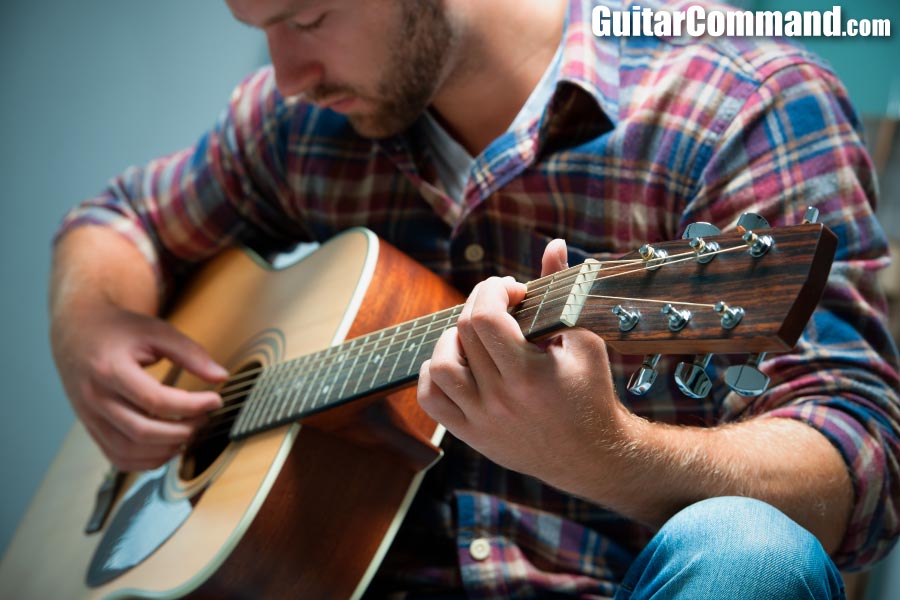
The notes on a classical guitar neck are exactly the same as those on acoustic and electric guitars. This, and the bonus of already having developed good finger strength, will give acoustic and electric guitarists a definite advantage when starting classical guitar.
Many classical guitarists began by playing either acoustic or electric guitar, taking up the classical guitar at a later stage.
Many guitarists play classical guitar as well as electric and/or acoustic guitar, and have no difficulty in switching between the different styles. Learning classical guitar does not prevent you from playing other types of guitar.
Can You Teach Yourself To Play Classical Guitar?
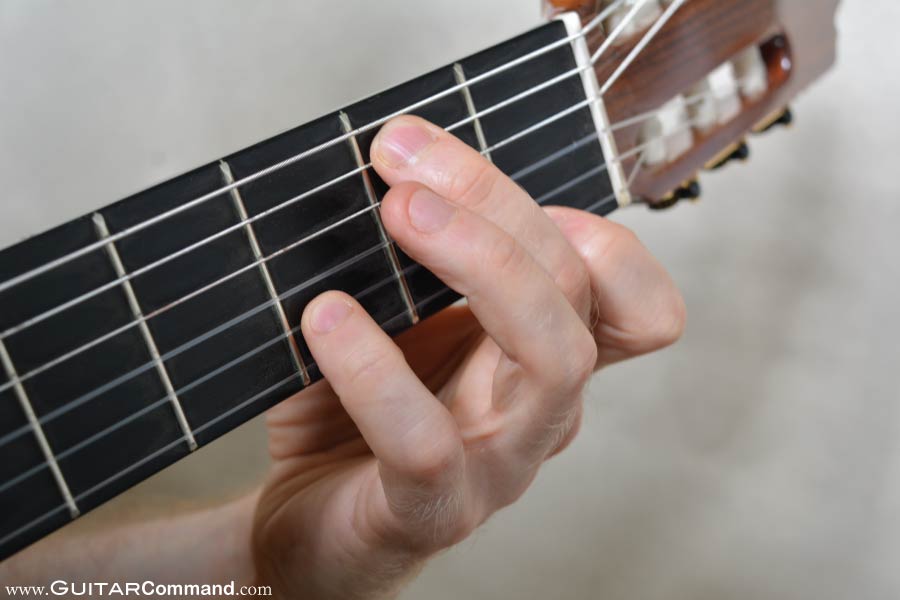
It is possible to teach yourself to play classic guitar, either by reading books or by following online tutorials. However, classical guitar, perhaps more so than other types of guitar, benefits strongly from being taught in person.
Classical guitar has a specific playing technique, and requires the ability to read and correctly interpret music, both things that are most easily relayed by a teacher who is in the same room as you.
Classical Guitar Sound
A classical guitar produces a mellow, warm tone. Although harsher sounds can be produced if necessary, nylon-sting guitars are neither as metallic nor as bright-sounding as acoustic guitars. Techniques such as vibrato and tremolo add to the expressivity of the classical guitar.
Differences Between Classical Guitar And Acoustic Guitar
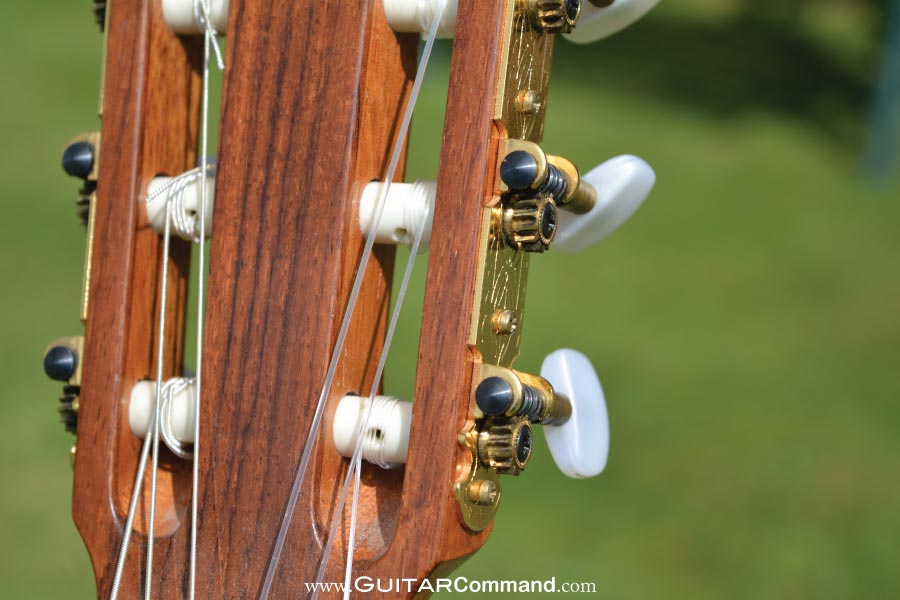
Classical guitars have nylon strings (which are wrapped with metal on the three lowest strings), whereas acoustic guitars are strung with strings made of steel or equivalent metal (hence the name “steel-string guitar”).
The use of nylon strings means that there is less strain on the neck of a classical guitar, and therefore less need for reinforcement. Classical guitars do not have the metal rod known as a “truss rod” inside the neck, and are usually lighter than acoustic guitars.
Classical guitar necks are wider, and this, together with the use of nylon strings, makes a classical guitar generally more “forgiving” to play than an acoustic guitar.
Because classical guitars are played with the fingers, they rarely have pick guards.
Unfortunately, due to their intricate construction, classical guitars can be slightly more expensive to buy than other kinds of guitar.
How Much Is A Classical Guitar?
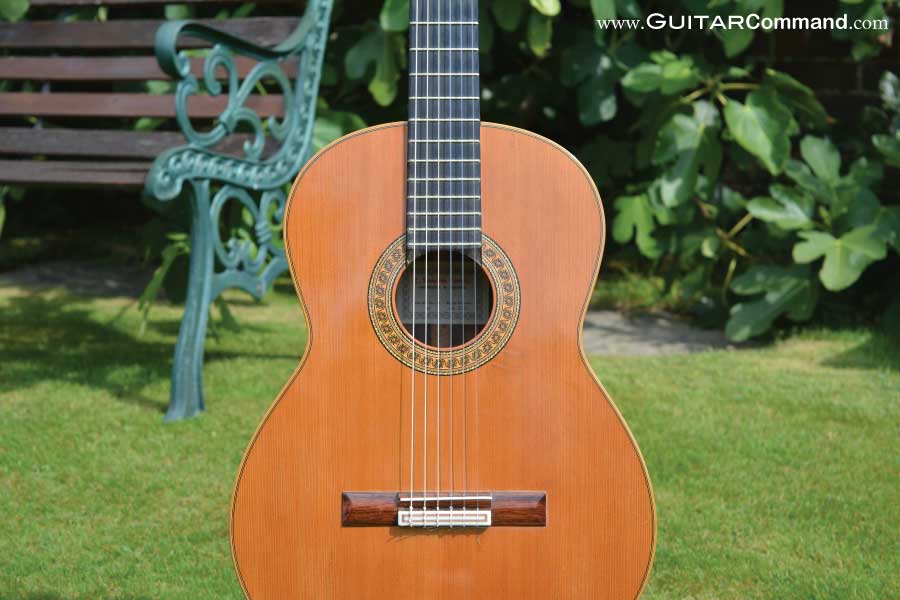
Classical guitars range in price from around $200 to upwards of $10,000. Lower priced guitars are mass produced, whereas the most expensive instruments are hand-made by individual makers who often have waiting lists ranging from months to years.
Unfortunately, the very cheapest classical guitars – and therefore, those most likely to be bought by beginners – are often the hardest and least rewarding to play.
Expect to pay in the region of $300 to $500 for a good quality beginner’s classical guitar that won’t put you off playing the instrument before you’ve learned the basics. Even at this price point, concessions may have to be made in terms of playability and sound.
Expect to pay around $600 to $800 for a student guitar that will take you up to a reasonably high standard.
At this point, you may want to invest in a professional-level guitar, which could cost between $1,000 and $2,000. Above this level, and you’re beginning to look at hand-made concert instruments that have the required sound and projection for playing professionally.
Bargains can be had by buying second hand, and it’s always a good idea to go shopping with someone who knows what to look for.
Whatever level you’re at, we recommend talking to a specialist classical guitar dealer who will be able to point you in the right direction regarding the type of guitar you need and the brands and makers producing those types of instruments.
Classical Guitar Technique
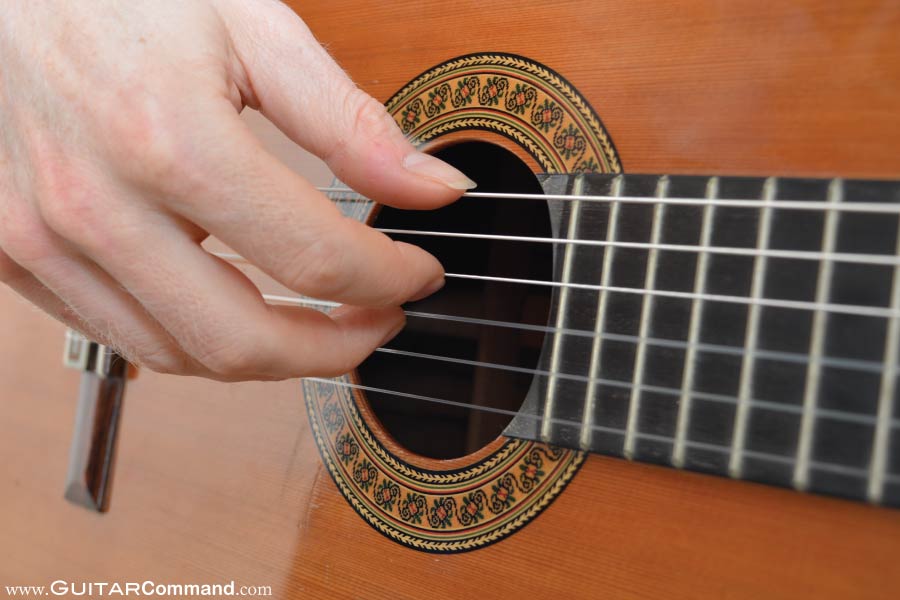
The classical guitar has a standard playing technique that has been developed over centuries. More than in other styles of guitar playing, there is a “correct” way of playing classical guitar.
The guitar is played while seated, resting on the performer's left thigh, and being held close to the body. A footstool is usually used to raise the left leg so that the instrument is positioned at a comfortable height for playing.
In classical guitar, the left hand is used in much the same way as it is in other types of guitar, fingering note and chords by pushing down on the strings at the required frets. Barres and half-barres – techniques in which a single finger is used to hold down multiple notes – are both utilised.
Classical guitarists don't use a pick; instead, the fingers of the right hand are used to pluck the strings. A range of right-hand techniques can be employed to vary the sound produced.
Playing with the fingers and thumb of the right hand, rather than with a pick, means that individual strings can be plucked to produce separate bass, mid and treble lines. (The little finger, or pinkie, of the right hand is generally not used.)
In classical guitar, notes are sounded using one of two picking styles: “tirando” or “apoyando”.
- Tirando is a free stroke, in which the finger strikes the string as part of a continuous motion.
- Apoyando is a rest stroke, in which the finger strikes the string, but rather than continuing, comes to rest on the adjacent string. This technique results in a stronger sound that can be used to emphasise notes or melodies.
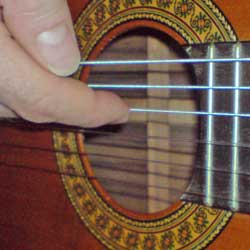
Other classical guitar right hand techniques include tremolo, rasgueado and golpe:
- Tremolo is when each note of a melody is sounded by three right hand fingers in quick succession, giving the impression of one continuously sustained note. The thumb is used to play notes between the tremolo part.
- Rasguado is a strumming motion, most often performed with the second finger.
- Golpe is a percussive tap on the guitar body, most often used in flamenco playing.
Classical guitarists use vibrato in a similar way to other guitarists, but rarely bend the strings. Harmonics are often used.
You can see how to play harmonics on this page: Guitar Harmonics
Do I Need To Grow My Nails To Play Classical Guitar?
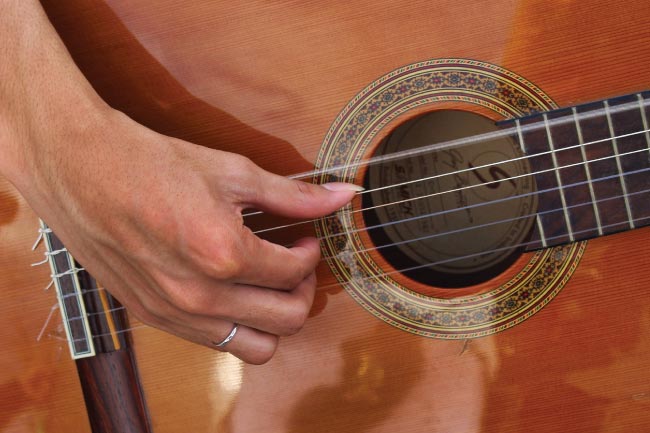
The majority of classical guitarists grow the fingernails of the picking hand in order to produce a sound that is both clearer and louder than that produced by the flesh of the finger alone.
Many classical guitarists would go so far as to say that having fingernails on the picking hand (and not the fretting hand) is a requirement for playing classical guitar. Only a minority of guitarists eschew the use of nails altogether.
Unfortunately, a classical guitarist’s fingernails are somewhat of an Achilles’ heel; breaking a nail before a performance can be disastrous, and classical guitarists are often seen desperately filing, sanding, even gluing their nails after a breakage. If you play classical guitar, you’ll want to keep your nails in optimal condition.
The fingernails / no fingernails debate has been raging for hundreds of years: famous classical guitarist and composer Fernando Sor (c. 1778 – 1839) did not grow his nails, while his contemporary, guitarist and composer Dionisio Aguado y García (1784 –1849) encouraged the use of fingernails.
Do I Need To Be Able To Read Music To Play Classical Guitar?
The majority of classical guitarists learn to read music. Very little classical guitar music is printed with tab, and in order to learn new pieces, a classical guitarist must therefore be able to read music.
This contrasts with acoustic and electric guitar, whose players often don’t read music, instead relying on chord charts, TAB, playing by ear and improvisation.
You can find out more about tab on this page: How To Read Guitar Tab
What Music Can I Play On Classical Guitar?
The classical guitar repertoire encompasses music from the Renaissance to the present day. It includes not only music written for the instrument itself, but also music written for other plucked instruments such as the lute, vihuela and baroque guitar, as well as music written for instruments in other families, such as the piano, and transcribed for the guitar.
Music by some of the world’s greatest composers, including Vivaldi, Weiss and J. S. Bach, can be played on the classical guitar.
Composers who wrote music specifically for the guitar include Fernando Sor, Dionisio Aguado y García, Mauro Giuliani, Johann Kaspar Mertz, Francisco Tárrega, Agustín Barrios Mangoré, Heitor Villa-Lobos, Federico Moreno Torroba, Joaquín Rodrigo, Mario Castelnuovo-Tedesco, Manuel Ponce, Leo Brouwer, Antonio Lauro, Enrique Solares, William Walton, Benjamin Britten and Peter Maxwell Davies.
Transcriptions of piano pieces by composers such as Albéniz and Granados, are also regularly performed on guitar.
Graded Classical Guitar Exams
In the UK and other countries, a classical guitarist's progress is often marked by taking graded exams. The highest level of these, Grade 8, is extremely demanding, and often a requirement for those wishing to specialize in the guitar at university.
After Grade 8, guitarists can go on to take diploma exams, either in performance or in teaching.
Taking exams is by no means essential, and most people learn classical guitar purely for pleasure.
Starting Classical Guitar: Conclusion & Links
We hope that this article has inspired you to take up the classical guitar. If you have any questions, feel free to ask them in the comments below.
You may be interested in the following pages:



Thanks. Your narrative had been very helpful for me as I am about to start learning classical guitar and I was very much confused on acoustic vs classical and your write up helped me decide with a clarity